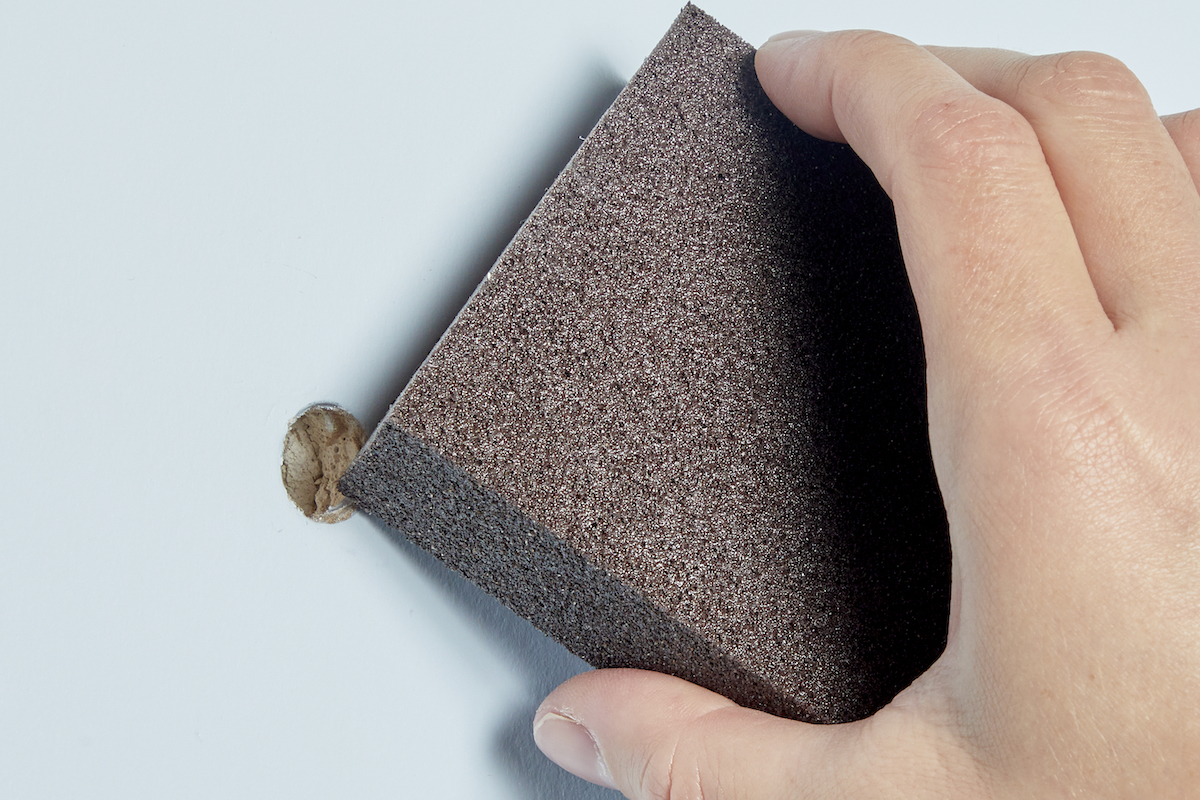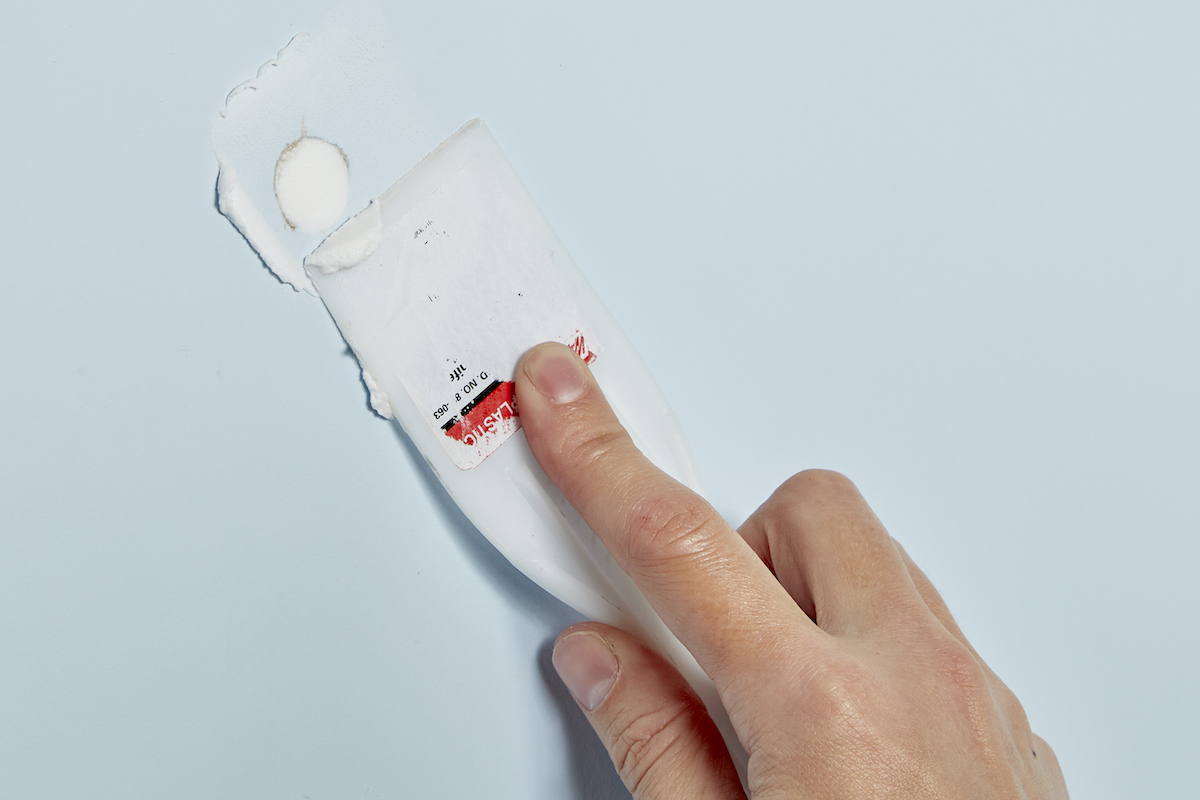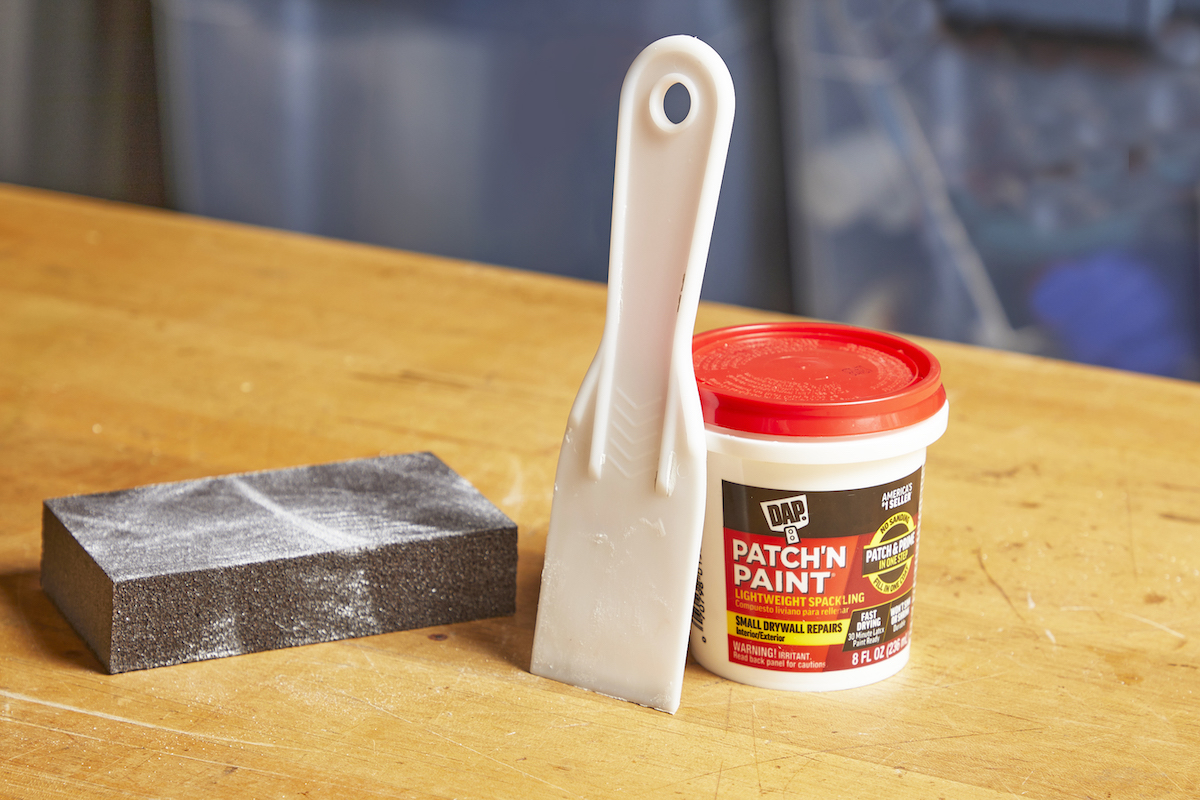We may earn revenue from the products available on this page and participate in affiliate programs. Learn More ›
Maybe there was a mishap while moving a major appliance. Or perhaps someone hung some pictures the old-fashioned way by (gasp!) hammering nails rather than relying on damage-free wall mounting strips. Whatever the cause, you’re now facing small dings, dents, and gouges to your plaster or gypsum board walls.
The fastest way to repair drywall is to use spackle compound, a type of putty not to be confused with drywall or joint compound, which are applied similarly but generally used to remedy larger, properly reinforced holes. What’s great about spackle compound is it dries quickly and shrinks minimally, allowing you to patch minor damage without waiting 24 hours before repainting. Nail down precisely how to spackle, and you’ll make short work of all future wall repair.
Tools & Materials
Bobvila.com may earn a commission from purchases made through these links.
Step 1: Choose the right compound for the hole.
First, pick your compound. Spackle compound comes two ways: in a convenient pre-mixed paste or in powdered form that you’ll mix with water for proper consistency. Pre-mixed compound is sold in “lightweight” and “all purpose” varieties. The former, which includes a vinyl binding agent, is best for small holes in areas that aren’t vulnerable to future damage; the latter includes acrylic and is suitable for voids as wide as 3/4 inch. Both vinyl and acrylic add elasticity to minimize shrinkage.
Step 2: Clean in and around the hole.

Prepare the area you plan to spackle to enhance the putty’s sticking power. Use the putty knife or fine-grit sandpaper to clean all debris from in and around the hole and make the surface as smooth as possible.
Step 3: Apply the spackle to the hole.

Time to mix and apply to the hole in the wall! The type of putty you picked up will determine how to prep the spackle. If you purchased powdered spackle compound, mix it with small amounts of water until it reaches a thick yet easy-to-spread consistency. Prepare a small batch—you can always mix more if you need it. Pre-mixed compound is generally good to go, but stir it well if you’re using a previously opened container. (Always close the lid after getting what you need so the paste doesn’t dry out.)
Dip the edge of the putty knife into the spackling compound and scoop out a bit more than what you’ll need to fill the hole. Hold the putty-loaded knife slightly above the damage site at a slight angle and apply with a downward motion to patch.
Step 4: Scrape away excess putty.

When the hole is filled, hold the knife at a 90-degree angle to scrape away excess, taking care not to pull the putty from the hole. Don’t strive for perfection here as you spackle the wall; you’ll sand it smooth once dry. Use a damp cloth or sponge to wipe residual compound from the wall next to the repair site.
Step 5: Assess the dried spackle.
Review your work after about 2 hours, when the compound should be dry. If the patch seems to be recessed, the paste shrank a bit as it dried. Holes deeper than ¼ inch often need more than one application of spackle. In this case, repeat the previous steps, this time leaving a slight mound that you’ll sand off later. Wait another 2 hours.
Step 6: Sand the spackled hole.

Once your spackle compound is dry, lightly sand the repaired area with fine-grit sandpaper until it’s flush with the surrounding wall. Use the cloth to wipe away any dust.
Now that you’ve mastered how to spackle this gouge and nearly any other dings to come, simply prime and paint the patched area until it fully blends in with the surrounding wall. A seamless look, in a snap!


